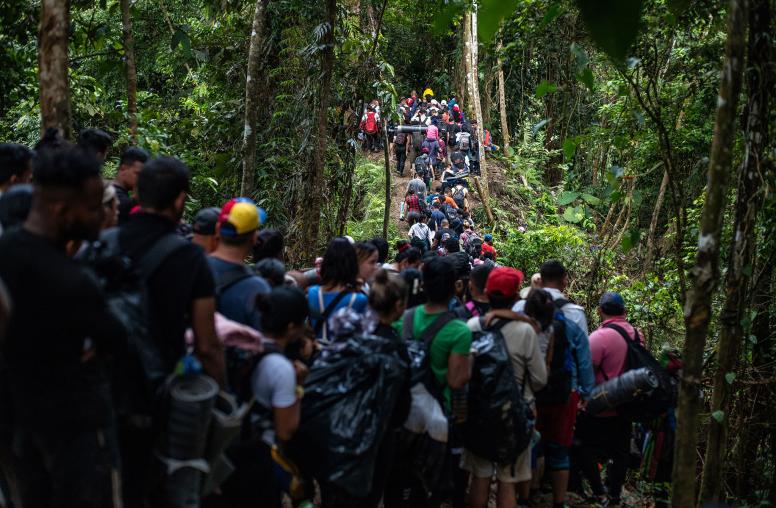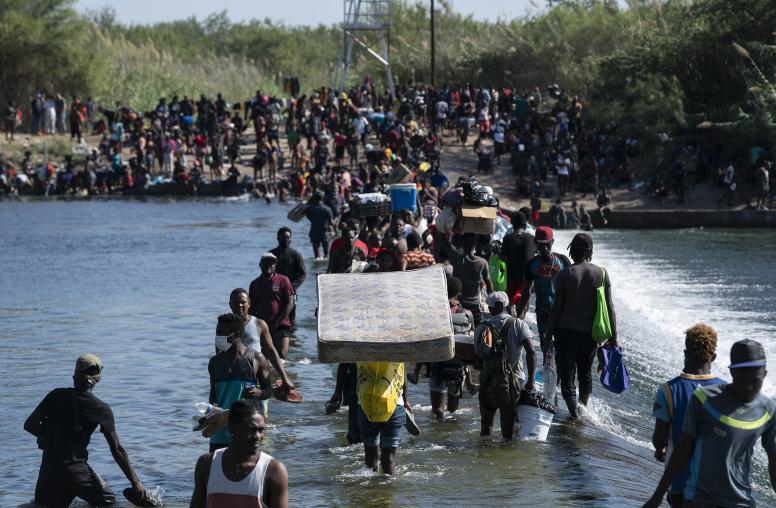Don’t Leave Fragile States Behind in the Fight Against Coronavirus
Fragile states are poorly equipped to deal with an outbreak, posing a significant risk in the global response to COVID-19.
Since the World Health Organization declared COVID-19 a global pandemic, the virus has demonstrated it can infect anyone, anywhere. The disease has affected 179 countries and regions and has spread to all 50 U.S. states. Yet if the pandemic has spread far and wide, its impacts have not been the same everywhere. The disease may be taking radically different trajectories, even among wealthy countries. While it may be too early to tell how the disease’s spread will play out in specific countries, one thing is certain: the world’s fragile states—where the social contract between citizens and the state is severed or weak—are likely to be the hardest hit, and that could pose a significant risk to the global pandemic response.

COVID’s Still Unknown Reach in Fragile States
Much of the world has watched with alarm as the disease spreads largely unabated across parts of Asia, Europe and the United States, yet far less attention has focused on the pandemic’s impacts in fragile states. One reason for this may be that as of late March, countries in the Middle East, sub-Saharan Africa and Latin America reported far fewer cases than richer ones.
It is unclear whether to attribute the lower numbers to the disease’s as-of-yet limited spread in the global south or to obstacles to its detection. But the lack of adequate reporting may well mask the seriousness of the situation in fragile states.
The speed at which the virus spreads has outstripped detection capacity even in the most developed nations and poses a far greater challenge in countries with weak health systems. In conflict-affected countries, active fighting can impede access for health workers, compounding the challenges facing weak central governments with limited reach outside their capitals.
International aid agencies have a critical role in helping to establish functional disease surveillance systems, a function they performed effectively in West Africa during the 2014-16 Ebola outbreak. Yet the restrictions put in place globally in response to COVID-19, which are necessary to slow the disease’s spread, are complicating international coordination, surveillance and relief efforts.
Fragility May Prolong the Pandemic, Exacerbate Instability
As the disease spreads more widely in fragile regions, it is difficult to overstate the challenges the international community will face in seeking to control COVID-19 globally. Poor living conditions—from lack of sanitation to crowding in cities and beyond—provide ideal conditions for the virus to spread. Displaced populations living across the Middle East and Africa will be at high risk. Governments may not be able to impose strict social distancing in countries where people’s very survival depends on access to local markets, and social distancing could cause massive food insecurity. The international community may not be able to step in to help either, given the restrictions on relief operations, and limited availability and high demand for medical supplies around the world.
Weak governments may also lack capacity to mount effective public health campaigns and to enforce the kinds of social distancing measures that have succeeded in flattening the curve elsewhere. Fragile states are often beset by multiple crises at once, including other infectious diseases and humanitarian crises, and diverting resources toward emergency responses can severely undermine long-term development. Health experts estimate that because the response to the 2014-16 Ebola epidemic in West Africa was delayed, billions of dollars that could have otherwise been used to strengthen health systems were allocated instead to the Ebola response.
Fragile states are also likely to be hit by an economic tsunami in the form of a sudden, sharp and perhaps unprecedented global recession, which could have severe secondary impacts on these countries. While we still lack precise economic data on the scope of the global downturn, early analysis shows that low-income countries are already bearing the brunt of reduced production of goods in, and trade with, China. Initial estimates of the economic impacts are staggering: the United Nations Development Programme estimates that income losses will reach $220 billion in developing countries, and that half of all jobs in Africa could be lost. Workers across developing countries will suffer on an unimaginable scale from lost employment—and families will struggle to put food on the table—but governments won’t have the resources to provide adequate social safety nets to mitigate the impacts on livelihoods.
The global health crisis could also exacerbate instability in fragile states over the long term. The outbreak has reportedly already sparked isolated violent demonstrations in some countries, as well as violent confrontations with state security forces. A growing body of evidence shows that while economic recessions may not cause new conflicts in resilient countries with no recent history of conflict, a sudden commodity price drop or trade imbalance can intensify or prolong violence in a fragile state. An economic downturn can incentivize people to take up arms, while at the same time reducing government income and capacity to maintain security.
Prioritize Political Legitimacy and Locally Led Approaches
It will be critical to act early to aid the most vulnerable countries and populations, bolster weak health systems and soften the economic blow to their economies, to prevent the worst-case scenarios. Global response efforts should be guided by three principles:
- Act early to prevent the spread of the virus in fragile states, despite data gaps. Donors and governments in fragile states should expect significant lags in epidemiological data on the spread of the coronavirus—but should act early to bolster weak health systems and provide adequate life-saving assistance to address the immediate humanitarian impacts of the global crisis. Rigorous, shared assessments are urgently needed to determine what populations, sectors and countries will be hardest hit by the crisis. This evidence will be needed to identify priority needs and effectively coordinate aid
- Provide adequate humanitarian and development assistance to avert worst-case health and economic scenarios. The U.N. and multilateral development banks have already started to mobilize funds to address weak health capacity and the economic fallouts from the crisis. Last week G-20 leaders pledged to spend $5 trillion to help shore up the global economy, although it is unclear how much of that funding would be directed to the most vulnerable fragile states. These early investments in the global crisis response will be critical, but they are just a drop in the bucket relative to the stimulus packages we have seen in wealthier countries. Much more will be needed given the unprecedented scale of the crisis.
- Prioritize support for legitimacy and good governance. Ultimately, fragile states will be vulnerable to this pandemic not only due to their resource, infrastructure and capacity deficits, but because of gaps in political legitimacy. Because governments must rely on citizens to voluntarily comply with public health interventions, trust deficits in fragile states can be an important obstacle to successful disease response efforts. Sierra Leone was able to turnaround its lagging efforts to counter the 2014-16 Ebola outbreak by working closely with locally trusted institutions, a lesson that has been successfully applied to containing the more recent outbreak of this disease in the Democratic Republic of Congo. By contrast, China’s response to the outbreak of COVID-19 may have been hampered by the government’s lack of transparency and efforts to suppress evidence of the pandemic early on.
Now is the time to mainstream the best practices prescribed under recent frameworks like the Global Fragility Act and the World Bank’s Strategy for Fragility, Conflict and Violence into global response efforts. Designing approaches that are locally led, inclusive and legitimate in the eyes of citizens is a lesson the peacebuilding community has also learned. To maximize the chances of successfully controlling the global spread of the virus and reducing the threat to international stability, these lessons must be reflected in the international response to COVID-19 in fragile states.

